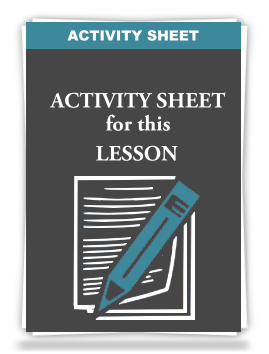- Home
- How I Help
- Don’t Take “No” For An Answer! [ARTICLE]
Performance Driven Selling® Dealing with Objections!
The fear and anxiety that can come over a sales professional at the instant the prospect or customer utters an objection while the sales professional is presenting their product or service can be alarming. Train yourself to be aware of potential objections and have logical effective responses at the ready.
Many times an objection may in fact be a question in disguise. As a sales professional, you must become very adept at listening ‘into’ the objection to determine what the question is that is not being asked. By making this determination, you can then guide the conversation in a constructive direction. Listen closely, respond (a logic based response) and not react (an emotional or defensive response).
When dealing with an “objection” you want to engage the other person in a conversational. A great way to frame your conversational engagement approach is to utilize the following three step approach:
- FIRST - Qualify what you have just heard as the objection. This is easily done by merely restating in their own words, what you just heard them to say and ask for confirmation. Never use your words and never appear to be confrontational, just restate what you heard.
- SECOND – Clarify what you heard then by putting it into context based upon fact, logic, data that is not from your position. You do not want to appear to be challenging them, you want to merely engage them conversationally and present additional, new information for them to put into context what you presenting at the time of their objection or no statement.
- THIRD – Close that interaction based upon what you do at step two and their response. If they process your new data and are accepting, you would continue with your sales presentation as if you never were interrupted with the objection, as you have now conversationally, politely and factually dealt with the objection question presented. If they do not accept your new third party data, politely wrap up your conversation for that day, as they are not going to buy and any further interaction at that moment in time will cause theme to passive-aggressively work against you after you leave.
An “objection” is simply a response to the offer that we have not personalized enough to them so that they see significant gain by accepting our offer. Work more diligently on the Interest questioning stage of the sales process and the Presentation solution stage, and the volume of “objections” will decline and the percentage of closing successes will go up!
Another great conversationally way to respond to objections … A great way of determining in fact if an objection just received is in fact the only obstacle to making a potential sale, consider using an “Objection Qualification Question” like,
- “I can appreciate your concern with (insert what they just said as the “no”), let me ask you, if we can address this concern fairly would there be any other reason that would hold you back from considering my offer?”
- “The reason I mention this is, (insert a benefit statement that you have delivered to a previous prospect that recognized your value proposition and bought/joined/etc.), perhaps we can do the same for you, let me ask you a few questions.
- “May I ask you a few questions?” … And now defer to your consultative relationship seeking vetting questions.
This question will help in determining whether or not there are obstacles or future objections that may arise. This sort of question also provides you the opportunity to vet out whether what has been presented as an objection is real or merely a deflection and there is really something more substantial that you need to uncover, so you can conversationally address.
By confirming this objection then you can single focus on the precise objection, if possible. If addressed, then the Presentation phase (the third step in the selling process) of the Five Steps to the Selling Process, can proceed directly to the last step, asking for the Order/Close.
Obviously, by asking the above question, if the prospect/customer is reluctant to proceed, then you may want to ask anther polite probing question,
This question works to draw out conversationally (smoke out the hidden and possibly the true objection to be addresses!) from the other party what may need additional attention.
If the objection moves to resistance, mentally evaluate and if appropriate ask question to re-qualify the person’s capacity to meet the criteria developed in Performance Driven Selling article #15 to determine if in fact you have been talking with or to a “Qualified Customer Profile”.
Recognize three easy quick reference questions to ask yourself concerning the other party and if you don’t know definitively the answer to their need, ask these questions to solicit feedback from the other party.
The core qualifying questions, as presented in Performance Driven Selling article #16 are, “Qualified Prospect” is someone who at a minimum:
- Who has a need for what you offer;
- Has the capacity to buy;
- And, has an urgency to do so now!
As a successful sales professional, you must address any valid objection in the conversational sales approach. Any objection left un-addressed may resonate in the prospects and customers mind to such a level after you part company, that it may cause that issue to grow and cause them to say “no”.
Understand that once the precise “objection” has been identified, it is now up to the you to mentally determine if in fact that “objection” can be addressed and thus put to bed. If so, recognize that at the moment you receive an ‘objection’, you cannot continue in the selling process as presented in previous Performance Driven Selling articles, you must at the moment of receiving an ‘objection’ stop and from where ever you are, mentally go back to the second step within the Five Step Sales Process and ask great questions, and then continue to the third step present the most applicable and powerful “Claim-Fact/Feature-Benefit-Naildown” sequence that they can (see Performance Driven Selling article #3 and #8 for review).
The Naildown question is a powerful way to put to closure that “objection” and move back in the conversation where the “objection” last came about.
A means to visualizing how to address an “objection” once additional questions (used only as necessary) have sifted out substantive insight to the actual “objection” is to construct ones’ response as if one were making a sandwich – the “Sandwich” technique. To do this, respond to an “objection” in three steps (three statements) – nothing extra needs to be said or done:
- (visualize the base piece of bun/bread) = positive reference or statement.;
- (visualize the piece of meat/substance) = objection or negative issue.
- (visualize the top piece of bun/bread) = positive reference or statement.
As the top piece of bread is paced and a corresponding statement given, the Naildown, would be as if one were piercing the “sandwich” with a large toothpick (nail) to hold the entire formula technique together.
An example of how the “Sandwich” technique may sound:
- “I can appreciate your concern with __(insert objection)__ [this first part of the sentence serves as the base bun and is an empathy statement], that is a genuine concern [this is the meat, substance], there are several ways we can address this [top piece of bun, positive response], _______.
- This does address your initial “Objection” doesn’t it [last response is a Naildown]?”.
Should the objection be one that you just can not resolve at the present time, yet it may resolve itself over time, then strategically save this prospect as a lead to be contacted in the future when their objection matter is no longer valid, as they may in fact be a great future prospect for cultivation as a customer!
In this situation, find a polite conversational way to bring your sales discussion to closure, leave, send them a follow up "Thank You" note, maintain their name in your lead generation system (data base, call report, etc.) for continual future review and possible marketing contact purposes.





